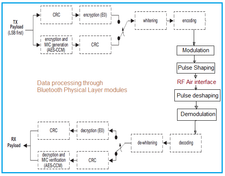
Top 10 Radio Frequency (RF) Applications
Explore the diverse applications of radio frequency (RF) technology, from broadcasting and mobile communication to medical imaging and smart home devices.
Showing 20 posts (Page 17 of 22)
Advertisement

Explore the diverse applications of radio frequency (RF) technology, from broadcasting and mobile communication to medical imaging and smart home devices.
Explore leading IoT transceiver manufacturers providing cutting-edge technology for seamless connectivity in smart homes, cities, and industrial IoT applications.
Explore leading RF antenna manufacturers for WiMAX, WLAN, LTE, and satellite applications. Find suppliers offering high-performance solutions for wireless communication systems.
Explore leading RF filter manufacturers and their contributions to wireless communication, covering types, specs, and key industry players.

Explore the TransferJet physical layer, vital for ultra-fast and secure wireless data transfers. Understand its operation and features through its transmitter block diagram.

Explore TransferJet: a high-speed, close-proximity wireless tech. Learn about its features, working principles, frame structure, and comparison with WiFi and NFC.

An overview of turbo encoders and convolutional turbo codes (CTC), a Forward Error Correction technique used in modern wireless systems like WiMAX and LTE.
Explore the key differences and advantages of UltraCMOS technology over Gallium Arsenide (GaAs) in RF applications.
Learn how UMTS uses modulation (QPSK/BPSK), spreading, and scrambling to optimize data transmission and improve 3G network performance.

Explore the difference between UMTS TDD and UMTS FDD, including frame structures and frequency usage. Understand TDD and FDD concepts in UMTS.

Explore 5G mmWave frequency bands (30 GHz to 100 GHz) and the millimeter wave range, which are key to ultra-fast speeds and low latency in 5G technology. Discover bandwidth details.

Explore key 5G RF parameters for testing devices and networks. This article covers frequency range, bandwidth, signal quality, transmit power, and more.

Explore 802.11ac beamforming, enhancing SNR and data rates through focused transmission. Learn about explicit channel measurements, NDP sounding, and single/multi-user beamforming techniques.

Explore the Bluetooth physical layer's specifications based on IEEE 802.15.1, including modulation techniques like GFSK, signal representation, and the influence of physical layer attributes on data transfer rates.

Explore various Bluetooth profiles like HFP, HSP, A2DP, AVRCP, PBAP, and MAP, detailing their functions, key features, and use cases for seamless device communication.

Explore Bluetooth technology, covering its basics, advantages, disadvantages, and applications. Learn about its role in wireless communication and IoT.

Learn about CBRS, a shared spectrum service in the US, its tiers (Incumbent, PAL, GAA), network architecture, and advantages for users and operators.
CBRS is a wireless communication system using the 3550-3700 MHz band (LTE band 48 in the US). It enables shared spectrum access for 4G LTE and 5G NR, benefiting enterprises and industries.
Explore the concept of data rate in wireless communication, its calculation, and typical data rates for various wireless technologies like GSM, LTE, and more.

Learn about DECT phone technology, including its key characteristics, applications, and prominent manufacturers. Discover how DECT phones enable wireless communication within fixed telephone networks.
Advertisement